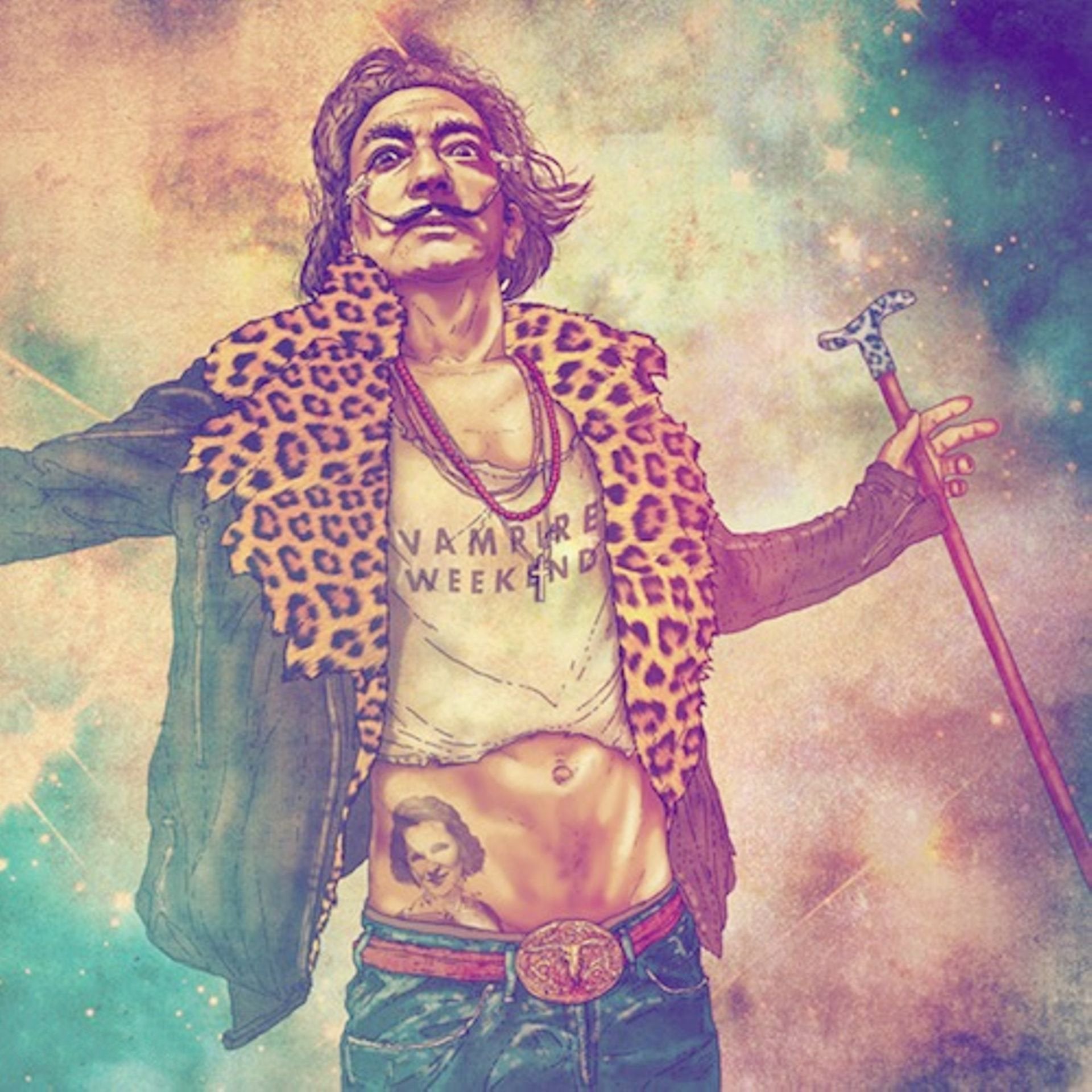


Salvador Dalì Vintage Print T-Shirt
Tax included. Shipping calculated at checkout
Free DHL shipping for purchases over €250
If for some reason you are not happy with your purchase you can return it to us within 14 days for an exchange or refund.
Regular-fit T-shirts in soft cotton jersey with a round, rib-trimmed neckline and a straight hem.
Regular fit
Neckline: Round neck
Composition
- Cotton 100%
Material: Cotton, Jersey
Materials in this product explained
The t-shirt is made of 100% combed cotton, 165g, unshrinkable. The shirts in this collection are made with a screen printing process to provide the best print quality.
Care instructions
- Wash with similar colours
- Only non-chlorine bleach when needed
- High iron
- Machine wash at 30°
- Can be dry cleaned
- Line dry
The t-shirts are made of 100% combed cotton, 165g, unshrinkable.All the shirts in this collection are made with a screen printing process to provide the best print quality.
The young Dali attended the San Fernando Academy of Fine Arts in Madrid. Early recognition of Dali’s talent came with his first one-man show in Barcelona in 1925. He became internationally known when three of his paintings, including The Basket of Bread (now in the Museum’s collection), were shown in the third annual Carnegie International Exhibition in Pittsburgh in 1928.
The following year, Dali held his first one-man show in Paris. He also joined the surrealists, led by former Dadaist Andre Breton. That year, Dali met Gala Eluard when she visited him in Cadaques with her husband, poet Paul Eluard. She became Dali’s lover, muse, business manager, and chief inspiration.
Dali soon became a leader of the Surrealist Movement. His painting, The Persistance of Memory, with the soft or melting watches is still one of the best-known surrealist works. But as the war approached, the apolitical Dali clashed with the Surrealists and was “expelled” from the surrealist group during a “trial” in 1934. He did however, exhibit works in international surrealist exhibitions throughout the decade but by 1940, Dali was moving into a new type of painting with a preoccupation with science and religion.
Dali and Gala escaped from Europe during World War II, spending 1940-48 in the United States. These were very important years for the artist. The Museum of Modern Art in New York gave Dali his first major retrospective exhibit in 1941. This was followed in 1942 by the publication of Dali’s autobiography, The Secret Life of Salvador Dali.
As Dali moved away from Surrealism and into his classic period, he began his series of 19 large canvases, many concerning scientific, historical or religious themes. Among the best known of these works are The Hallucinogenic Toreador, and The Discovery of America by Christopher Columbus in the museum’s collection, and The Sacrament of the Last Supper in the collection of the National Gallery in Washington, D.C.
In 1974, Dali opened the Teatro Museo in Figueres, Spain. This was followed by retrospectives in Paris and London at the end of the decade. After the death of his wife, Gala in 1982, Dali’s health began to fail. It deteriorated further after he was burned in a fire in his home in Pubol in 1984. Two years later, a pace-maker was implanted. Much of this part of his life was spent in seclusion, first in Pubol and later in his apartments at Torre Galatea, adjacent to the Teatro Museo. Salvador Dali died on January 23, 1989 in Figueres from heart failure with respiratory complications.
As an artist, Salvador Dali was not limited to a particular style or media. The body of his work, from early impressionist paintings through his transitional surrealist works, and into his classical period, reveals a constantly growing and evolving artist. Dali worked in all media, leaving behind a wealth of oils, watercolors, drawings, graphics, and sculptures, films, photographs, performance pieces, jewels and objects of all descriptions. As important, he left for posterity the permission to explore all aspects of one’s own life and to give them artistic expression.
Whether working from pure inspiration or on a commissioned illustration, Dali’s matchless insight and symbolic complexity are apparent. Above all, Dali was a superb draftsman. His excellence as a creative artist will always set a standard for the art of the twentieth century.
Choose options



